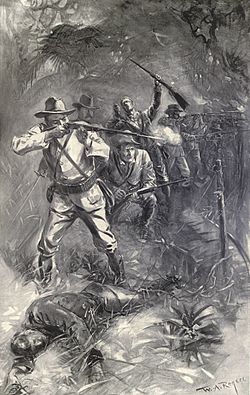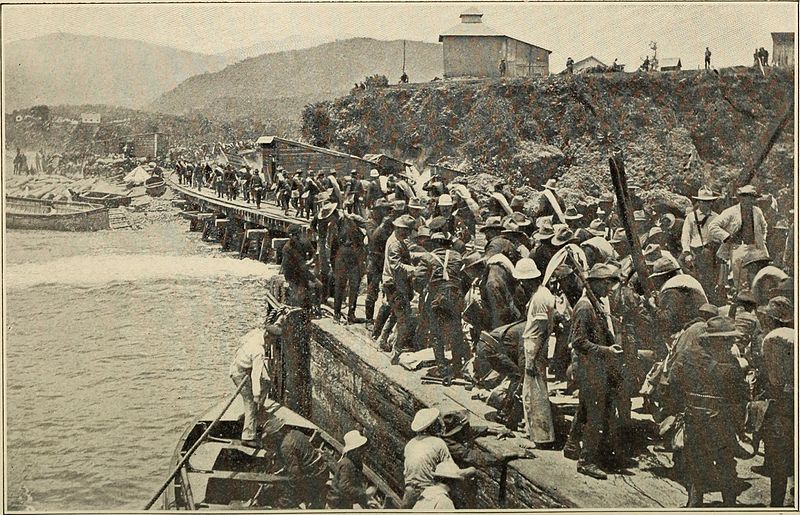Under a lone maple tree on a small island surrounded by Sections 31, 32, 33 and 34 at Woodlawn Cemetery lies a single soldier named Gustave A. Kalbe (Nee Kolbe). While all alone now, he is a testament to some amazing United States history, patriotism and family tragedy.
Gustave was born in Hamburg, Germany, in 1874. The first of many family tragedies happened when his sea captain father died in 1876 from Yellow Fever while in Santos, Brazil. To seek information on her husband’s death, Gustave’s mother, Catherine, set out in October 1878 aboard the German ship Pommerania. On November 26, the ship collided with the British Iron Braque Moel Eilian off the coast of Dover in the English Channel. She was one of roughly 50 lives lost in the wreck.

This event left the four Kolbe children orphans. Richard, the youngest, was the only one to survive past age 30. The siblings emigrated to the United States all at different times and settled in Syracuse, New York. Bertha died in September of 1893, having committed suicide by drowning herself in Onondaga Lake. Newspaper accounts said that she has become despondent in her classwork at school. A note on her nightstand said she would not be back and asked that her brother take care of her affairs. She then rented a boat and sailed out to the middle of the lake. The boat was found the next morning turned upside down. Bertha was 25. Frederick “Fritz” died in February 1896 of Typhoid Fever. Fritz had been a private with the 13th Infantry stationed at Fort Niagara at the time of his death. He was 24.
As for Gustave’s story, it is quite amazing. He emigrated to the United States in 1889 and worked as a salesman. On May 11, 1898, he enlisted in the Army at the start of the Spanish-American War. He enlisted in Chicago, Illinois, and became part of the 1st Cavalry – better known as the Rough Riders. Yes, that’s the group that was led by Theodore Roosevelt. The Rough Riders were part of the first Americans to be sent to Cuba for the war. In a letter Gustave sent to his brother Richard, he told him “Don’t have any fear. If anything happens to me, I will sell my life as dearly as possible.” Gustave indeed sold his life.

Gustave was the first American to fire when the Rough Riders arrived on June 24, 1898. He was also the first to be killed. He was left in a sandy grave with 7 of his comrades on the battlefield of LaGuasima, Cuba, because Richard could not afford to bring his brother’s body back from Cuba. Hearing the story of Gustave, the Syracuse Herald newspaper not only sent a representative to Cuba to retrieve the body, but paid all the expenses to do so.
On July 21, Adam C. Haeselbarth, the Sunday editor, and undertaker Samuel S. Mullin left Syracuse for Santiago, Chile. Secretary of War Russell A. Alger had furnished the orders to facilitate the recovery mission. Newspapers from all over the United States recounted the tale of the journey to bring Gustave home. The men reached Kolbe’s grave on August 11 at about 7:30 a.m. Haeselbarth remarked about that day as one he would never forget, saying “It was in many respects an example of what American soldiers have been forced to suffer for months on the island of Cuba.” At 4 p.m., with Kolbe’s body in a metallic casket, the return trip began.
After a more than 4,000-mile journey and a stop in New York City for a period of quarantine, Kolbe returned home to a hero’s welcome at 2 p.m. on August 25. Gustave was to lay in state in the city armory from 9 a.m. until 2 p.m. on August 28. A funeral service befitting the soldier immediately followed. Afterward, his flag-draped coffin was pulled in a hearse by four grey horses dressed in funeral bunting to Woodlawn Cemetery. It was estimated that more than 40,000 people lined the streets from the armory to his final resting place. The grave was donated by Woodlawn Cemetery and his near his sister’s final resting place. A Veterans of the Spanish-American War Post was created in his honor and members would come lay flowers on his grave for some years after. Today, his grave serves as a reminder of the sacrifices that American soldiers make for the idea of freedom.